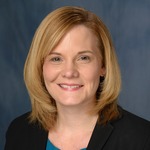“Alike” but Different: Building a Brand in the Wake of Its Successful Launch
// By Stacy Beers and Claire Hovis //

 When a new brand takes hold as intended, one tough job is over—but another has already begun. How soon is too soon to change gears from brand establishment to a new phase of promotion? Will new messages come across as mixed messages and muddy the clear impression you’ve worked so hard to make? One major health system found the right balance with a constructive twist on its launch theme. The people across campaign phases worked in pairs, while the connection between them evolved.
When a new brand takes hold as intended, one tough job is over—but another has already begun. How soon is too soon to change gears from brand establishment to a new phase of promotion? Will new messages come across as mixed messages and muddy the clear impression you’ve worked so hard to make? One major health system found the right balance with a constructive twist on its launch theme. The people across campaign phases worked in pairs, while the connection between them evolved.
The hospitals and primary care and specialty practices of UF Health aren’t new in their Florida market. But their name is. Before 2013, the health system was known as UF&Shands. That ampersand joined the six health-related colleges, research centers, and institutes of the University of Florida Health Science Center with the private, not-for-profit Shands family of teaching hospitals where UF physicians practice.
The old brand wasn’t broken, but it wasn’t set up to handle the challenges that were coming: more competition, changing expectations from patients, increased consolidation, and internal division among the system’s own employees. UF&Shands needed to redefine and build its brand for long-term success and market differentiation. In looking forward, the health system collaborated with Capstrat, a strategic communications agency, to help shape a new strategy.
Months of qualitative and quantitative research revealed that patients didn’t understand the connection between UF and Shands. More important, they didn’t understand why the relationship between the system’s two halves should mean anything to them. The system’s relationship with the university meant the care people received in the system’s hospitals and practices was enriched by leading-edge medical research, but the value of that was lost on the public. The colleges of UF’s Health Science Center were contributing to medical research and patient care on a national level. A new, single, university-centric name could help make that value part of the conversation.
